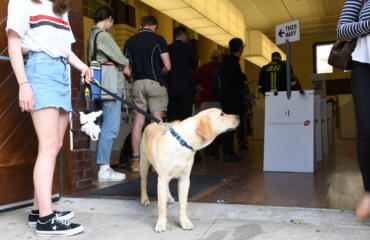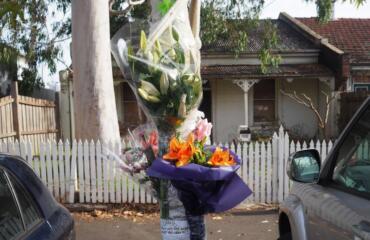
Ballarat is expanding, but services have been lagging. PIC: Tim Clare
As housing affordability, urban sprawl and congestion threaten Melbourne’s livability, the federal seat of Ballarat is experiencing growth unmatched by any other regional electorate in Victoria.
About Ballarat
► Held by shadow health minister Catherine King, Ballarat carries marginal seat status for the first time since the 2004 election.
► The electorate’s population is surging thanks to its proximity to Melbourne, low house prices and spending promised during the 2014 state election.
Comprising the major centres of Ballarat, Bacchus Marsh and Daylesford, the region boasts 150,000 residents. Ten years ago, it was 125,000.
The seat has been held since 2001 by Labor MP Catherine King — spokeswoman for health in Bill Shorten’s shadow ministry — with a comfortable margin of 4.9 per cent.
Obesity is the biggest health issue facing Ballarat, according to the acting chief executive of Ballarat Health Services, Andrew Kinnersly. “We have got a crisis on our hands; we’ve got close to the highest obesity rates in the nation.”
The region’s health services are coming under pressure due to the impact of obesity on rates of diabetes and the need for dialysis services; combined with the other major health concerns of illicit drug use and low rates of cancer survival.
“Clearly, increases in capacity are important for us,” said Mr Kinnersly. “We need more theatre capacity, we need more in-patient bed capacity and we’ve got enormous demand for dental services.”
Capacity isn’t the only issue in the electorate’s health services. Serious questions have been raised about the quality of care in the obstetrics unit of the Bacchus Marsh hospital, which has been under investigation by authorities due to the deaths of 18 babies over two years. An external review is also being held into accusations of bullying and harassment at Ballarat Health Services, particularly in the youth mental health department.
Another issue foremost in the minds of Ballarat voters is education.
“Ballarat is a large regional centre that has areas of disadvantage,” said the principal of Ballarat High School, Gary Palmer. “I think those families and those kids need every opportunity. Supporting that disadvantage is really critical.
“We have some kids that need that extra support with their literacy and numeracy. What’s been put in place will all be undone if there’s no commitment to the kids who have those needs.”
Mr Palmer believes funding certainty is critical, as well as funding levels, because uncertainty interferes with schools’ ability to plan for student needs.
With the region’s population projected to push towards 200,000, infrastructure can be expected to loom as a major issue throughout the election campaign.
“We are not really looking long term at how we set Ballarat up to be as resilient and as equitable to the majority of our residents as it can be,” said John Barnes of the Ballarat Residents and Ratepayers Association.
“Things like a good urban bus service, good rail links to Melbourne, good regional bus services to other cities — perhaps even opening up rail lines between Ballarat and Geelong, and Ballarat and Bendigo,” said Barnes.

The Mayor of Moorabool Shire, Allan Comrie, cites a proposed agribusiness precinct at Parwan that is expected to deliver 1195 jobs for the Bacchus Marsh area as the shire’s highest priority infrastructure project. However, he said works to connect vital utilities to the precinct have not, as yet, been supported by funding commitments from political leaders.
Nevertheless, the chair of the Committee for Ballarat, Janet Dore, thinks Ballarat has the potential to grow jobs in sectors specific to the region.
“I think it’s around agribusiness and resource recovery. Resource recovery, waste to energy — there’s a whole lot of great technology out there that we should be able to pick up on.”
The region’s main employers are in the education sector, health and transport services, along with food manufacturers Mars and McCain, brick company Selkirks and paint manufacturer Haymes.
Attracting small businesses to the region will also be key to sustaining growth over the long term, say community leaders.
“We need to find ways to give incentives to businesses to relocate,” said Ms Dore. “I think we’re going to have a lot more artisan-type operations. The ‘millennials’ are showing with their feet that they’ll come and operate from a place like this because they want lifestyle, they want opportunity,” she said.
Young couple Zoe Cleverdon and James Newton recently moved to Ballarat from Melbourne.
“I said I was happy to move away from Melbourne, but it had to be an adventure for the both of us,” said Ms Cleverdon. “We did some research and Ballarat seemed perfect. Two years later, seven other friends have have also relocated.”
Ms Cleverdon has set up a vegan and gluten-free cake business.
“The city council was really helpful in setting up all the registrations. I think if I had started in Melbourne I may have been overwhelmed,” she said. “Ballarat seemed easier somehow.”
► A version of this story also appears at Unipollwatch.



